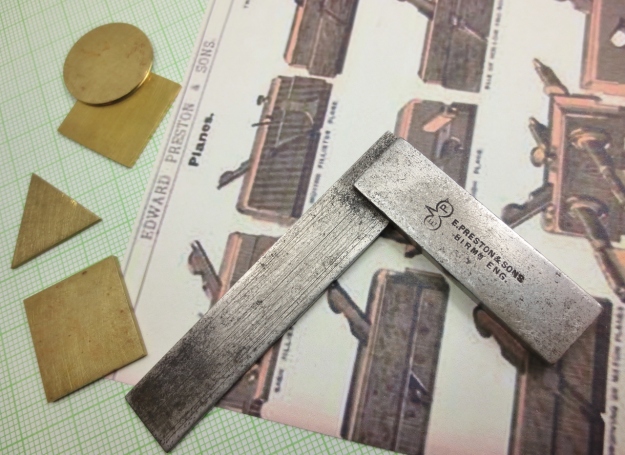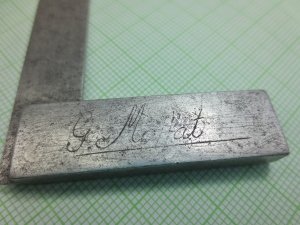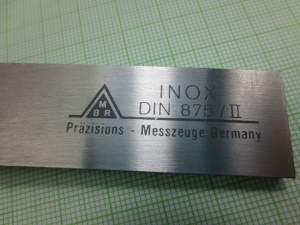Is there anything more exciting that browsing through a tool catalogue? (Don’t answer that, it was a rhetorical question) Of course, the printed ones are the best kind as you can write on them and put sticky notes on your favorite pages, but I love them all. To me, tool catalogues are fun because tools are synonymous with possibilities.
Many years ago, when I was still a jewellery student, I was given an old set square
by a friend. It had been passed on to him when he was apprenticed to a
shipwright, designing and building wooden boats. I’ve always treasured it as a
symbol of our friendship and appreciated its beauty and elegance.
Its patina and slightly worn edges betray a long working life. And it is intriguing; it has a trademark logo with the letters “E P”, and “E PRESTON & SONS BIRMM, ENG.” stamped on one side of the body, and on the other, a name, “G. Moffat” engraved in an old-fashioned cursive. The trademark, sometimes called the Bird’s Eye, is from Edward Preston & Sons, a tool manufacturing company that operated from 1825 to 1932 in Birmingham, England; catalogues from the early 1900’s can be found online. As for G. Moffat, I don’t know who he was – a machinist perhaps – but I’ve always felt connected to him, and through him, to the brother/sisterhood of metal workers.
Fast forward a few years. I set up my own studio and gain more experience. I feel I can, with more confidence, set for myself higher standards of precision, and decide I am ready for a brand new made-in-Germany set square. Several years later, it is still as crisp as new and milled to perfection; when ultimate accuracy is required, that’s what I rely on. For goldsmiths, as with machinists, precision is essential, and our measuring tools – and set square – are always within easy reach on top of the bench. When you need a straight edge or a straight angle, or to check for squareness, place the blade of the square against the metal edge and put it in front of a light source. No light should shine through.
But no matter what project I am working on, G. Moffat’s set square is always right in front of me on my bench, next to its German-made pristine, younger counterpart. Yes, its edges are a bit too soft, its surface pitted and worn, but it is smaller and lighter and fits comfortably in my hand. What it may lack in accuracy, it makes up with ergonomics. G. Moffat carefully and proudly engraved his name on his set square; that tells me that he cared for his tools and valued his work. It is a reminder of where I come from, the sum of skills, knowledge and experience accumulated by tradespeople who’ve come before me.
If any of you have stories about tools that are meaningful to you, please share in the comments section.






